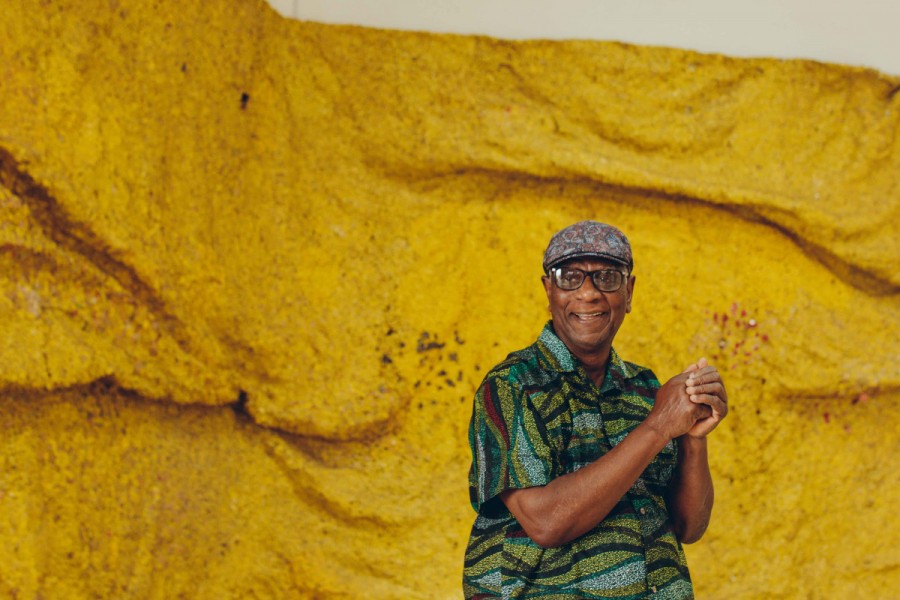The most significant exploration of El Anatsui’s practice ever staged in the UK, Scottish Mission Book Depot Keta spans five decades of work and will extend to the building’s façade, turning it into an open-air gallery this summer.
The exhibition opens with a monumental new work made specifically for Talbot Rice Gallery. It journeys through a large selection of Anatsui’s iconic large-scale sculptural wall hangings made with reclaimed metal from the bottling industry in Ghana and Nigeria (made between 2002 to 2024). This includes the ‘grandmother’ of these forms, Woman’s Cloth (2002), the first of its kind on loan from the British Museum, and a sleeping chamber in which to quietly observe Royal Slumber (2023).
The exhibition also includes a selection of carved wooden reliefs from over a 30 year period, as well as printed works on paper that tell the story, and carry the imprint, of his decades-long, intricate production of the monumental metal bottle-top artworks, most recently seen in an extraordinary commission for Tate Modern’s Turbine Hall. Culminating in a huge outdoor installation, TSIATSIA—Searching for Connection (2013) welcomes visitors and communities into the heart of the University—the grass Quad of the Old College reframed as a gallery—where connections will be sought and made throughout the Scottish summer.
One of Africa’s most prominent artists, many of El Anatsui’s artworks are created through the stitching-together of thousands of aluminum bottle tops, reclaimed from Ghanaian and Nigerian liquor bottling (and increasingly printing-press) industries. The pictorial compositions reflect the complexity of stitching together cultural, national and ethnic ideas of belonging in the aftermath of colonialism in Africa. They carry the weaving traditions of Anatsui’s own heritage (his father was both a fisherman and master weaver of Kente cloth) and express the vulnerability of our natural world. Slipping mercurially between painting and sculpture, the artworks are shape-shifting forms installed differently every time they are shown. Giving them a life and evolution that reflects Anatsui’s active understanding of his artworks as living objects they become carriers of meaning: listening and evolving, reacting to whoever has them in their custody. Rippling with intensity, his unification of thousands of fragments of metal to create a metamorphic whole has become fundamental to our understanding of the sculptural object and its ability to evolve.
Anatsui was born in Ghana in 1944 during the British colonial period, and his work has engaged critically with the impact of colonialism in post-independence Ghana, and across Africa. In making an extraordinary new 13 metre wide artwork within the volcanic surrounds of Edinburgh, he recalls the Scottish Mission Book Depot in Keta that provided his books and crayons as a child. The dynamic, earth-like tapestry of a variety of yellows is smattered with spots and scribbles in blue and red, reminding us of the child who seeks to articulate themselves on paper, and looking for the means with which to do it. Rising like rich, yellow clay from the ground, carrying the marks of a nascent creative voice engrained in its surface, Anatsui’s newest artwork arrives in Edinburgh with the indelible memory of Scotland’s role in the colonial project. It is with these tangled histories and complex futures that El Anatsui will unveil his work in Scotland—full of political, postcolonial and social histories.
Curated by Tessa Giblin and supported by Creative Scotland, Edinburgh College of Art and the University of Edinburgh. El Anatsui will also receive an Honorary Degree in July of 2024.
